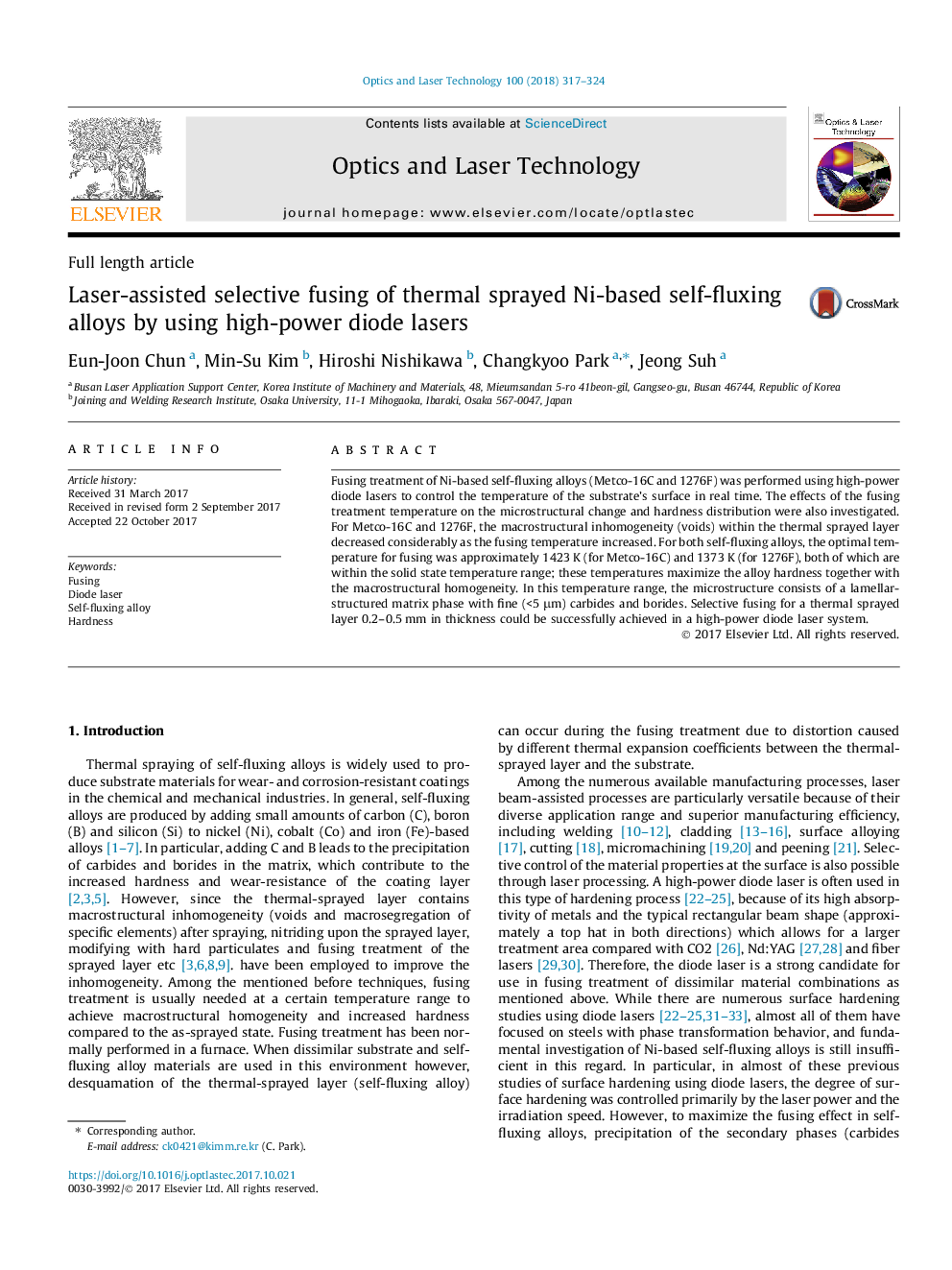| Article ID | Journal | Published Year | Pages | File Type |
|---|---|---|---|---|
| 7129665 | Optics & Laser Technology | 2018 | 8 Pages |
Abstract
Fusing treatment of Ni-based self-fluxing alloys (Metco-16C and 1276F) was performed using high-power diode lasers to control the temperature of the substrate's surface in real time. The effects of the fusing treatment temperature on the microstructural change and hardness distribution were also investigated. For Metco-16C and 1276F, the macrostructural inhomogeneity (voids) within the thermal sprayed layer decreased considerably as the fusing temperature increased. For both self-fluxing alloys, the optimal temperature for fusing was approximately 1423â¯K (for Metco-16C) and 1373â¯K (for 1276F), both of which are within the solid state temperature range; these temperatures maximize the alloy hardness together with the macrostructural homogeneity. In this temperature range, the microstructure consists of a lamellar-structured matrix phase with fine (<5â¯Î¼m) carbides and borides. Selective fusing for a thermal sprayed layer 0.2-0.5â¯mm in thickness could be successfully achieved in a high-power diode laser system.
Keywords
Related Topics
Physical Sciences and Engineering
Engineering
Electrical and Electronic Engineering
Authors
Eun-Joon Chun, Min-Su Kim, Hiroshi Nishikawa, Changkyoo Park, Jeong Suh,
